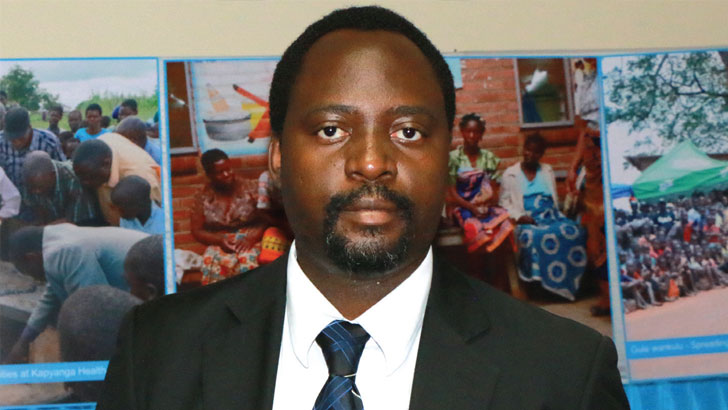Keeping covid-19 at bay
Mother’s Fun Run (MFR) — an initiative by Nation Publications Limited (NPL) to aid maternity wings in public hospitals and save the lives of mothers and newborns in childbirth — has incorporated Covid-19 activities on top of its area of focus.
In a written response, NPL business development manager, Chimwemwe Jere, said the project has taken this route this year to enhance Covid-19 prevention and control measures within the public health system.
Jere noted that the pandemic has clearly put additional pressure on the health system—with resources increasingly focused on primary measures to prevent the spread of the novel Corona Virus in the health facilities.
He was optimistic that such an intervention would help reduce the risks of transmission among mothers, girls and children, whose only hope for a safer delivery are the district hospitals and public health centres.
Over the years, MFR has become more aware of the precarious health system in the country, including overcrowding in the maternity wings and waiting homes, necessitating a long-term solution to decongest such facilities.

Said Jere: “Apart from the resources that will be put together through this year’s MFR initiative, we are appealing to partners and institutions of goodwill to consider funding renovations or build maternal waiting homes for the two district hospitals. This is important to ensure the decongestion of the waiting homes and the labour wards.”
That aside, he said this year’s funding will focus on putting up and/or repairing water, sanitation, and hygiene (Wash) facilities in the maternity wings and waiting homes to improve hygienic practices.
In a telephone interview, Chitipa director of health and social services (DHSS), Dr Wilson Ching’ani, indicated that although their maternity wing was recently expanded, they need an isolation site for those who test positive for Covid-19 to avoid exposing others to the pandemic.
“It would help if we had a standalone emergency treatment unit where we can also have a demarcation for the labour ward. This would help us to isolate Covid-19 positive pregnant women from the rest who have not been infected by the virus. So, we would want to have an emergency treatment unit where we also have a maternity section,” he explained.
He added that the district council has offered them the structures which used to house the Malawi Young Pioneers (MYP) base where a possible isolation structure can be housed, and the infrastructure cluster of the presidential taskforce on Covid-19 has taken measurements to work on it.
The situation is similar in Mulanje where DHSS Dr Alinafe Kalanga explains that with a small labour ward at the district hospital, designated structures can be constructed as an extension within the maternity department to allow demarcations of spacious admission areas and to enhance screening for Covid-19.
The district hospital’s labour ward is currently too small to be demarcated and use one side for the women who test positive for Covid-19.
For that reason, delivery is currently being done in the same ward; mixing Covid-19 positive and negative pregnant women and just being more careful not to mix the patients or the equipment being used to assist those that are Covid-19 positive.
Kalanga reckons that relocation of certain wards to give room for tailor-made renovations would also help.
“An extension at the Covid-19 treatment centre could also be ideal for the same purpose,” she says.
She, however, indicates that the hospital is currently doing its best to prevent the spread of the virus among the women who are currently at the hospital waiting for delivery or those waiting for their patients.
She says: “We carry out routine screening of pregnant women and guardians and we also encourage mandatory use of all precautionary measures among pregnant women, guardians and health care workers including wearing of face masks and regular washing of hands. Apart from that, Covid-19 suspects are tested.”
Mulanje District has an estimated population of 684 107, according to the 2018 National Statistical Office (NSO) figures.
Despite having 23 health facilities, the district hospital continues to record a rising neonatal mortality rate at 15.2 for every 1 000 live births.
Chitipa district, on the other hand, with a total population of 240 954 has 12 health facilities.
Both the maternal mortality and neonatal mortality rates in the district remain high at 156 per 100 000 births and 14 per 1 000 live births, respectively.
With long distances from some health centres to the district hospital, some mothers referred from the health facilities deliver on the way.
Other factors that contribute towards the high mortality rates within Chitipa district include inadequate space in the antenatal waiting ward which results in women not attending antenatal clinics and care. They are also facing the challenge of the limited capacity of waiting wards. To date, there is a reported bed capacity of 16 despite the facility catering to over 90 mothers.





